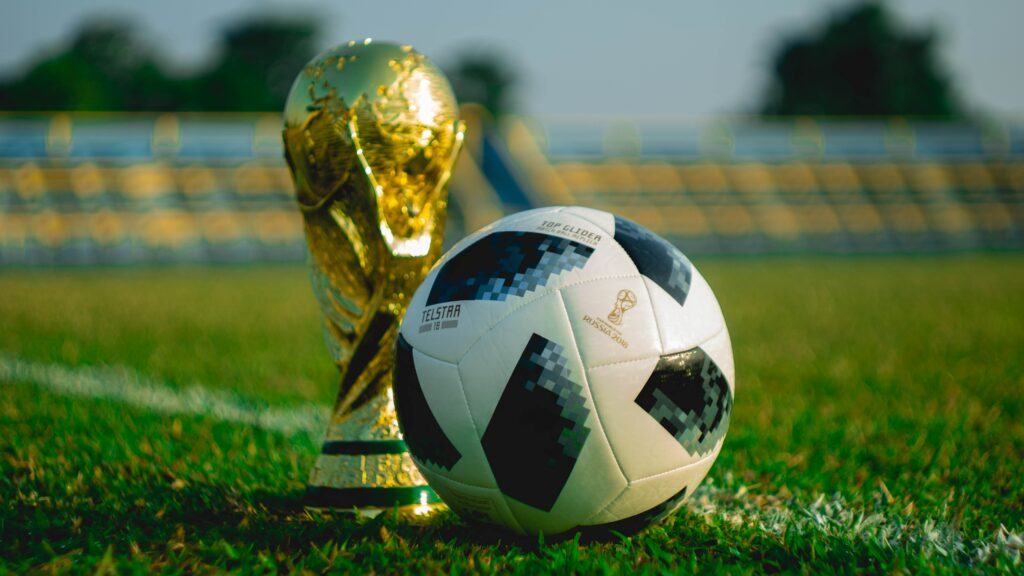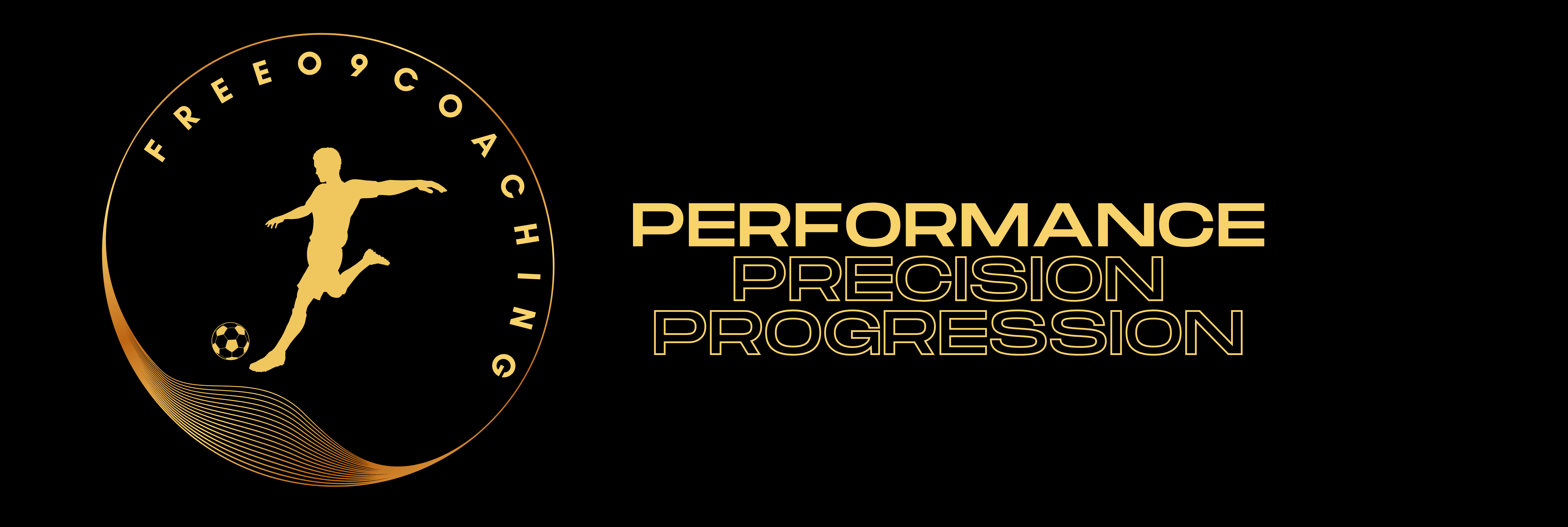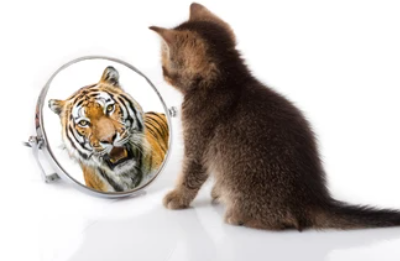
Mental toughness is something I have always classed myself as having. This was not something that was taught to me, it was through growing up during the 70s, 80s, and 90s. It was also about being a person of colour, constantly getting knockbacks, life struggles, hardship, etc.
All the things you have to fight through to come out of the other side if you indeed are to get to where you want to be.
I didn’t believe mental toughness could be taught I always thought it was developed through your own life experiences until only a few years ago, through the research I did for my Master’s degree.
It was at that moment I realised I was a resilient person (which is another article you can read here) and mental toughness was something I had self-taught to push myself harder to become better at the things I wanted to achieve.
Have you ever wondered how you can train mental toughness into your players?
Well, in this article I will give you 4 steps that you can develop with your players to help them increase their mental toughness.
But first:
What is Mental Toughness?

When you have researched mental toughness as I have, you will find there are lots of definitions by many different people dating back over 50 years.
There was an argument that the pioneering research started as early as 1926, but we won’t get into that.
However, I don’t remember having seen one clear definition in all of the papers I read.
But, If I were to summarise the definition it would read:
Mental toughness is the natural or developed psychological edge that enables the player to be better than their opponents in remaining focused and in control under pressure, whilst still being able to stay confident yet determined.
Mental Toughness is not just about what players do on the football pitch, it’s about how they approach matches and training. How to prepare, how to train and how to evaluate.
To be a ‘mentally tough’ player requires a willingness to develop and improve upon those areas in which they are lacking. This works in the same way that becoming ‘physically tough’ requires a conscious effort to improve the weak points in their overall athleticism.
There are no quick fixes to this, mental toughness cannot be improved overnight, any more than players can become suddenly fitter after one training session, it takes a commitment to the process.
4 Steps to Mental Toughness
Imagery

Imagery is also called visualisation or mental rehearsal. If done correctly It will include using all of the senses (e.g., see, feel, hear, taste, smell) to rehearse in the mind.
Mental imagery involves the use of imagination in developing skills and controlling behaviour.
These techniques can be practised during training or on match days or even riding in the car.
This works even better when used in conjunction with cue words and can be a powerful technique during games.
Below is an example of how to use imagery:
Relaxation
•A relaxed mind and body are essential to help you feel the movement patterns and experience any emotions generated. It will enable to use of a relaxation technique before imagery training.
Realism
- Create imagery so realistic you believe you are executing the skill. To obtain the most realistic imagery possible, you must incorporate definition, action, emotion, detail, and a positive result in your imagery:
- Definition – Make the images as vivid as possible, including colour
- Action – Break down the image into small components and visualise those components. (e.g., Shooting – consider the action of the arms, legs, trunk, head, feet, hands, breathing etc.)
- Emotion – Try to include emotional feelings in your images. Refresh your memory constantly by emphasising specific sensory awareness (e.g. smells, the wind) during training
- Detail – Incorporate as many of your senses as possible into your imagery so the scene is as clear and realistic as real life itself
- Positive result – This is essential, “if you can believe it, the mind can achieve it“ (Ronnie Lott)
Regularity
- Spending between 3 and 5 minutes on imagery seems to be the most effective. It should be included in training and also some time outside of training should be spent on imagery. (10-15 minutes a day)
Goal Setting

Coach support is needed for goal setting with players so you can help them to solve problems, make better decisions, learn new skills or otherwise progress in their role or career.
Players need to set goals but not just in the long term, they should also look in the medium and especially in the short term.
Setting and achieving short-term and in some cases, extremely short-term goals can keep the player motivated to push harder for those bigger goals. Nothing can drive a person on more than seeing progress.
There are 3 types of goals to consider when setting targets:
Outcome Goals (e.g., winning or performing better than someone else). Process Goals (e.g., deal with the technique or strategy necessary to perform well) and Performance Goals (e.g., specify a specific personal standard to be achieved).
In addition to the types of goals, there are some key principles involved in setting effective goals. A good tip for helping players remember effective goal principles is S.M.A.R.T.E.R
- Specific – Be precise and as detailed as possible
- Measurable – Rate the current position and then determine the amount of improvement required
- Accepted – Share and negotiate with all others involved
- Realistic – Realistic yet challenging
- Time-phased – The date is set for when the goal is to be achieved by
- Exciting – Motivates the individual
- Recorded – Progresses towards it is recorded
Self Talk
Positive self-talk is considered one of the primary mental skill techniques for developing a better game in football. It is designed to increase motivation, energy, effort and a positive attitude.
This can be used in different parts of training and competitions to channel energy to endure and perform at a higher level.
Although, for self-talk to be effective, it is important to develop personal or instructional statements that can be identified with, when some encouragement is needed (e.g., “Work hard,” “Stay positive,” or “Stay in balance,” “Eyes on the ball,” “Look before passing the ball.” ).
To make positive self-talk become second nature, it is essential to practice every day. Using positive self-talk regularly can begin to influence the football mind.
A technique I used myself when I was playing and things got tough or weren’t going well was the self-talk ‘RRR’ model:
1. Recognise – Recognise and eliminate negative thoughts.
2. Regroup – Regroup and leave the negative thoughts or distractions and choose to come back to a designated plan for thoughts.
3. Refocus – Refocus on your goals and once your thoughts return to the positive self-talk needed for success, it becomes crucial to maintain that focus to the maximum intensity.
Simulation

If a player is going to become more skilled at performing under pressure and understand what they need to do to be successful in a game, then the training sessions need to be as close to the real thing as possible.
I realised early in my career that the best players approached all the elements of training as though it was a competition. As I moved to bigger and better teams, training sessions started to replicate the game with managers encouraging players not to pull out of 50/50 tackles.
This was when I took on the mantra “Train as you Play”. As a player, you need to train as hard and as realistically as possible. Because, if you think you can turn it on and rise to the occasion when it’s real and the stakes are high, that very rarely happens. You will not rise to the occasion and you will most likely sink to the lowest level of your training.
Simulation training helps players to stay in the moment and feel more confident in themselves and ready to face the challenges head-on. Recreating matchday scenarios will help players to relax their minds and focus on working through the obstacles, challenges and what-if moments of a game.
Conclusion
Before starting anything new such as training mental toughness, coaches have to get the buy-in from their players. Some players will not embrace any form of mental training and it usually comes down to the fact that they don’t believe in it because they don’t understand it.
There is no denying that there is a mental component to performance. You just have to listen to any post-match comments by managers or players themselves, and you will notice many references to the importance of the mental side of the game.
Players who lack understanding regarding mental training tend to shy away from the suggestion.
However, for any young player trying to break into the highest level of football, these are the characteristics required, if they are to succeed in achieving their dream.
Emotionally – mentally tough individuals can maintain greater levels of control and confidence under stressful situations, which might lead to better psychological well-being.
Psychologically – they demonstrate greater restraint that allows them to commit to current tasks.
Behaviourally – they are more likely to adopt problem-focused coping strategies to effectively manage stress and make use of positive techniques.
Once the players have bought in and embraced the need for mental toughness training, a programme can then be put together.
If you enjoyed this article and have any questions or comments or just wish to share your thoughts.
Please leave them in the comments box and I will respond once I get the chance.



The ability to become mentally tough is the credence of champions. We can only become an expert in any field by overcoming any difficulties within our area of expertise. In the field of education many students have to be trained in order to develop mental toughness before writing exams. I have found that teaching students relaxation techniques using visualization is very effective at helping them to overcome test anxiety and the paralyzing nature of an overactive adrenaline system. The more vivid experience of relaxing moments that they have; the more they are able to overcome anxiety and develop mental toughness for their exams. Thank you for writing a very useful article.’
“if you can believe it, the mind can achieve it“ (Ronnie Lott)
I agree entirely Toplink if you want to succeed at anything in life, not just in football/soccer or any other sport you have to be mentally tough. Relaxation and visualisation techniques helped me no end during difficult moments in my career.
Thanks for all your comments they are much appreciated
Thanks Chris. Love the mantra. ‘Train how you play’. I’ve seen coaching sessions where players are not allowed to tackle. This is ok if you are practicing ‘intercepting’ for example but shouldn’t be left out of a SSG to prevent injury. Brian Clough once said something along the lines of if we are expecting players to tackle on a Saturday, they best be practising it in training during the week. Like you say, you cannot just turn things on and off at will. Keeping your training sessions as realistic to the game as possible is massive in this respect and was a massive learning point you gave me on my UEFA B course this year. If you don’t do it in a game or it doesn’t mirror what happens in a game you need to have a very good reason/ justification for doing it!
Thanks, Dean
I’m glad you’re getting something out of these articles as that’s the idea. Train how you Play has always been a big one for me, I just don’t see the point if it doesn’t look like the game. Unless you have a solid reason behind it such as teaching a new skill or technique in isolation.
PAGS was another one I told you about before, not sure if you remember it but I’ll leave it here for you to think about.
Hi Chris. Thanks for your reply. I cannot actually remember the PAGS one unless it refers to making sure Practices are game specific or plan actions (that are) game specific…. I love and normally remember a good acronym like the SMART one for goal setting, so please put me out of my misery and let me know what PAGS stands for…. Cue weekend cliffhanger… ?
Hi Dean. Not quite it stands for Practice at Game Speed. If your training sessions are not at a match pace it’s not worth doing